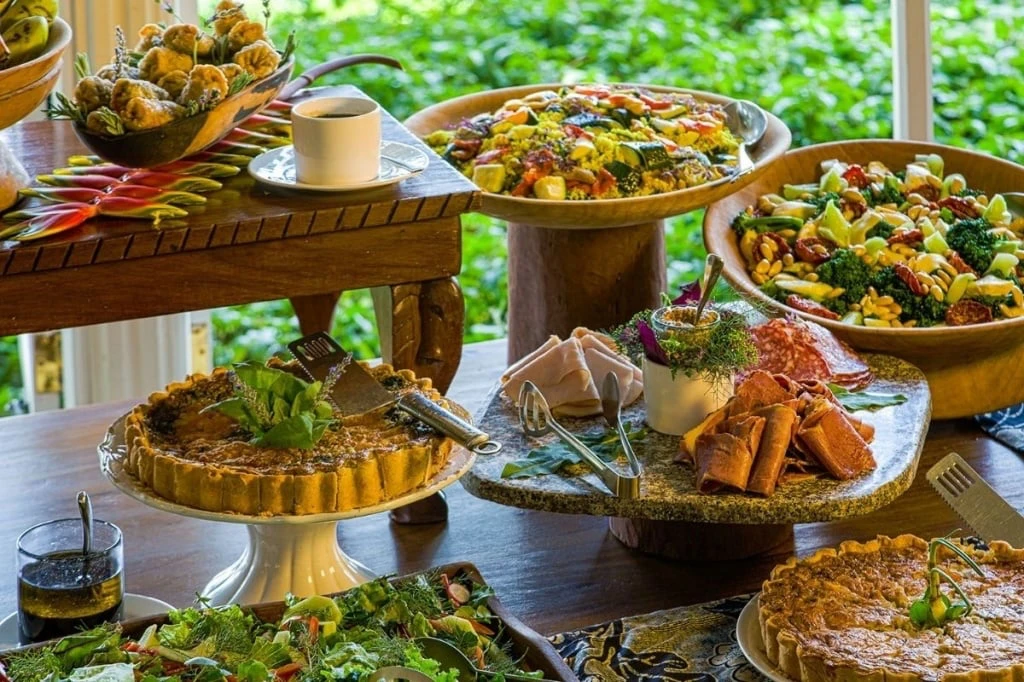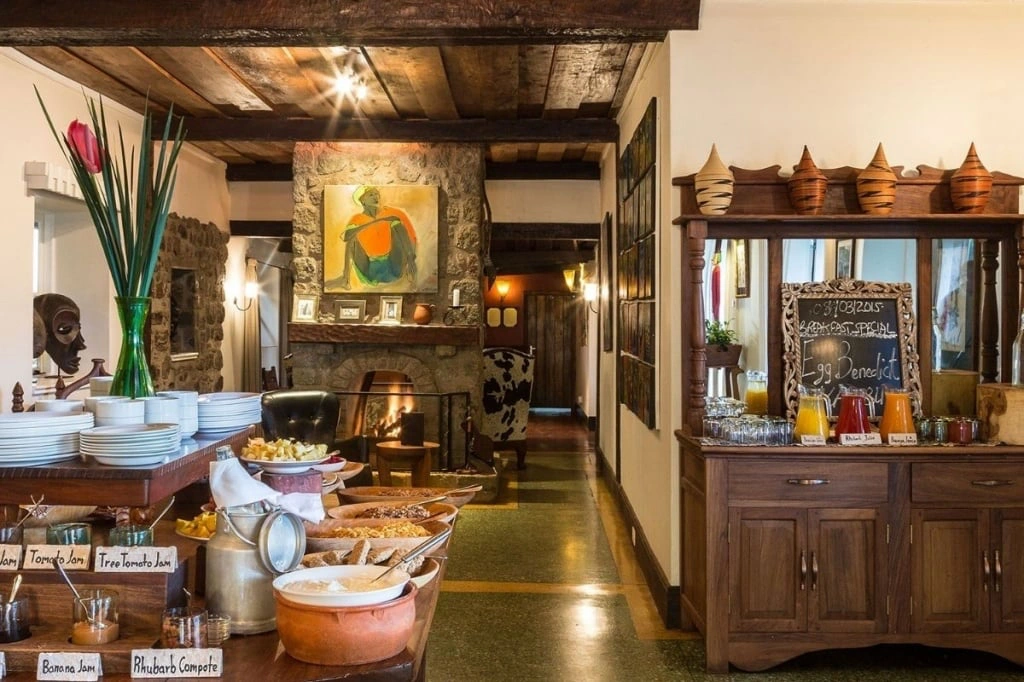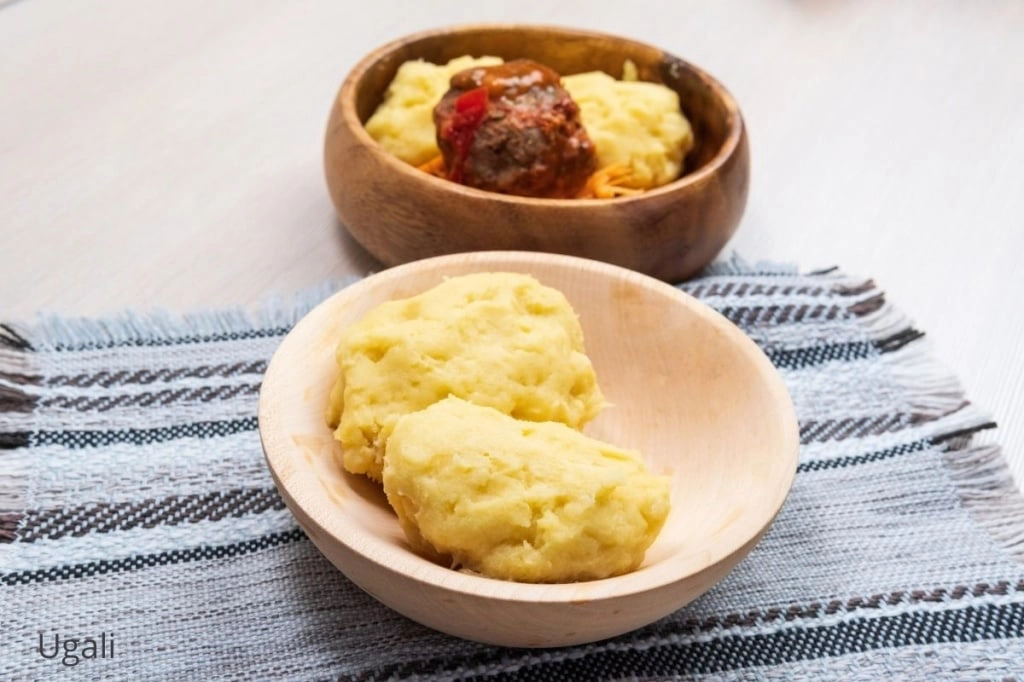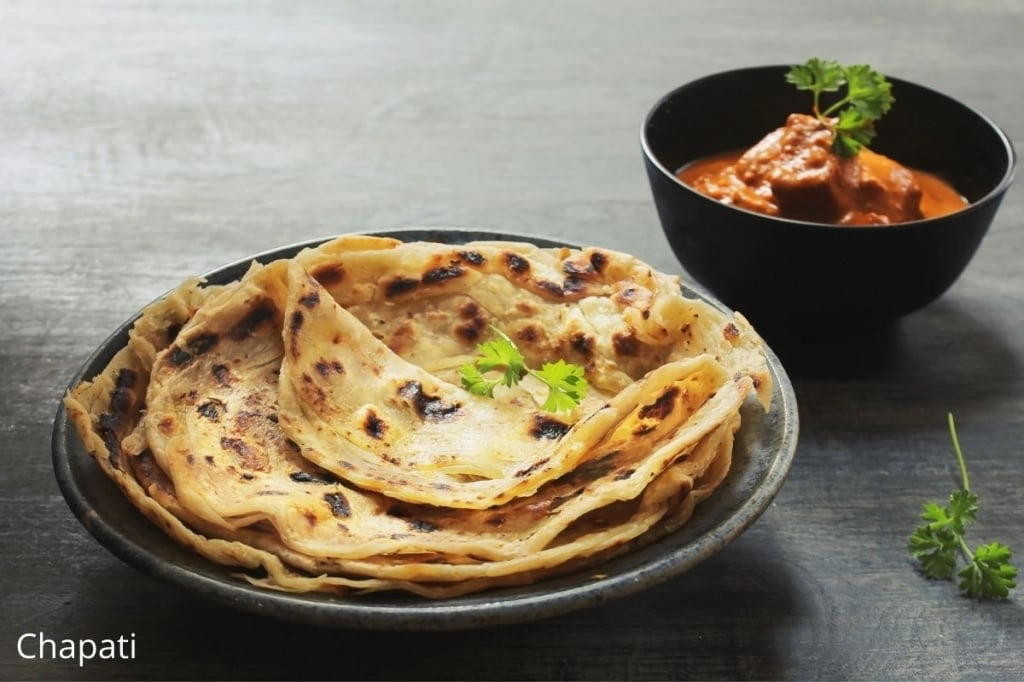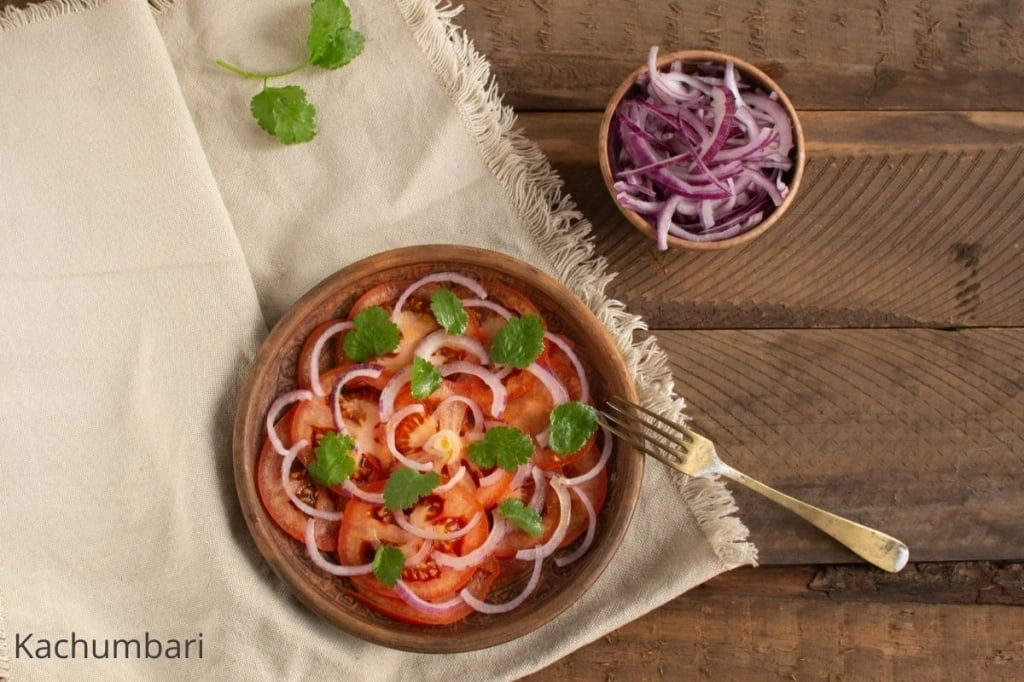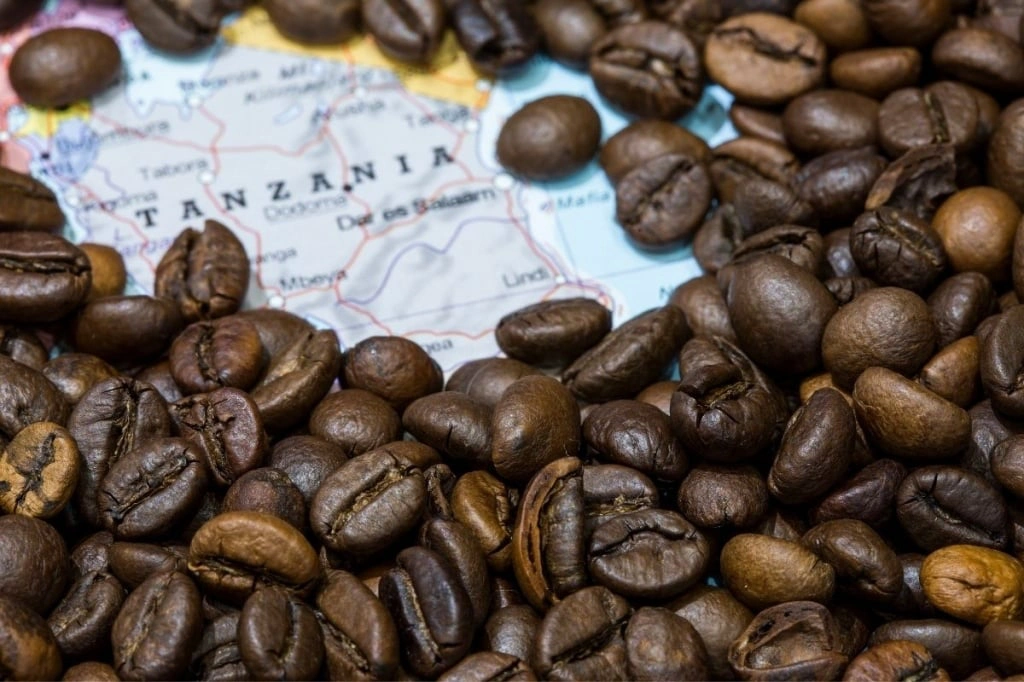Tanzania Food - The Complete Travel Guide: Culture, Facts, Habits
What do they eat in Tanzania?
Have you ever wondered what people eat in Tanzania? Then you’ve come to the right place! Tanzanian cuisine is marked by tropical flavors and East African staples. Unfortunately, there is a misconception that East African food is bland and the regional diet is typically poor - this just isn’t true! This inaccurate stereotype probably derived from other nations who have struggled with droughts or famines and has become a picture of ‘Africa’ in general. However, Tanzania is a very fertile land that has regular rainy seasons, an abundance of sunshine and is situated on the equator, all factors which work together for an ideal tropical environment and year-round growing seasons.
East African cuisine combines the best, freshest ingredients from its tropical climate with influences from all around: Perisan dishes, Indian spices and Portuguese-style barbecue techniques all have a place at the table.
Tourist destinations throughout Tanzania also cater to pallets from around the world, making Italian, Greek, English, Chinese and Indian restaurants easy to find in large towns and cities. During your travels in Tanzania you can check out various eateries or enjoy the in-house restaurants at your lodge or hotel - you’re sure to enjoy delicious meals that suit your taste!
This article looks at Tanzanian food - traditional dishes that visitors should sample, and other popular foods or fusion dishes that are worth a try. Your safari experience is not only about viewing wildlife, but about experiencing the beauty of Tanzania. The culture of food in Tanzania is a piece of that glorious picture of nature, history and excitement that defines this East African nation.
Tradition
Historically, Tanzania has been a crossroads of trade with the ancient Arab world and India, and this interaction influenced Tanzania’s cuisine. Today, some of the traditional foods found in Tanzania reflect Indian curries or spices, or Persian rice-dishes. Other traditional foods reflect the environment; cooking with bananas or coconuts, which are plentiful across the country. Tanzania has over 100 distinct tribes with their own language and customs, as well as traditional foods. Tribes originating along Lake Victoria or Lake Tanganyika commonly feature fresh fish in their traditional foods, while tribes from the highlands or agricultural regions often use meat or corn in their main foods.
Food habits
Hotels
In Tanzania, many restaurants are simply called ‘hotels’, which can be confusing for a tourist just looking for dinner, not an overnight stay. But don’t worry, there are plenty of hotels that are simply food establishments, not overnight accommodations - so don’t be shocked if you’re invited to a hotel by a local Tanzanian - it’s probably just lunch or dinner.
Please don't eat in public!
While eating is a very social thing in Tanzania, there are some unique social norms surrounding food in Tanzania. Generally, it is not accepted to eat while out-and-about. Perhaps walking down the street while eating a burger in one hand is normal in your home country, it is generally out-of-place in Tanzania. It is expected that everyone eats at a restaurant, or at a proper table. Many places have outdoor seating to enjoy sunny weather while having a meal, but walking about while eating or eating while driving in a car isn’t the norm in Tanzania.
Eating in public during the fasting period of Ramadan (a holy month for Muslims) is especially frowned upon, particularly in areas such as Dar es Salaam and Zanzibar. Since the large majority of Muslims participate in fasting, it is considered rude to eat in public during this time, which usually occurs in May and June of every year.
It’s okay to eat with your hands
One of the most popular dishes in Tanzania is ugali, and is often eaten with hands and not utensils. However, if you’re sampling ugali and would like a spoon or fork, please feel free to ask your server for one and you’ll be quickly accommodated.
Hand washing
Tanzanians often wash their hands before and after a meal, especially when eating nyama choma or ugali. Most establishments have a handwashing sink readily available for this purpose, however if you don’t see one, your server may come directly to your table with a basin of warm water and soap for this purpose.
Even if you ate your meal with utensils, you may be encouraged to wash your hands after you have finished eating, too.
Dishes definitely worth trying
If you’re not sure where to start, here are some Tanzania national dishes we recommend eating during your visit to Tanzania:
Staple Dishes
Ugali
Ugali is a staple food of the local Tanzanian diet, and many nationals swear by the nutritional benefits of this cornmeal porridge. Every Tanzanian home will likely serve a mound of the stiff, polenta-like ugali alongside a sauce of meat or vegetables. Served throughout East Africa, ugali is sometimes called ‘posho’, and is similar to West Africa’s ‘fu-fu’, it is a heavy carbohydrate which is sure to fill you up quickly.
Chapati
Similar to chapatis from India, these are flatbreads with soft and crispy layers. A perfect savory breakfast option, or a delicious pairing to one of Tanzania’s stews, you’re sure to love fresh Tanzanian chapatis at any time of day.
Kachumbari
This is a typical Tanzanian salad served alongside all types of foods. Commonly made of up tomatoes, cucumbers and red onions it resembles a Greek salad (minus the feta cheese). Kachumbari is made fresh and sometimes the vegetables are sliced incredibly thin to show off the cook’s knife-skills - cucumbers so thin they are transparent!
Breakfast treats
While bread or toast is commonly eaten for breakfast across the nation, Tanzanian cuisine also features some delicious breakfast treats you should definitely sample.
Maandazi
Maandazi are local Tanzanian doughnuts, usually triangle or rectangle-shaped. They are not coated in sugar or chocolate like the doughnuts you may be used to from back home, but they are often enjoyed with very sweet tea and are a tasty breakfast option.
Vitumbua
Vitumbua are similar to a fried rice cake. Fried over open flames or charcoal stoves in special pans, each ‘kitumbua’ ball has a crispy outside and a warm, gooey rice-pudding like middle.
Half-cakes
Half-cakesare a crunchy fried cake. Best served fresh and hot, these dense fried pieces of dough-cake are sure to fill you up fast, so start with one or two before ordering more.
Vegetarian dishes
A large portion of Tanzanian cuisine is vegetarian or even vegan-friendly. Those abstaining from meat products can find many healthy and hearty meal options during their travels in Tanzania.
Mboga Majani
Mboga Majani refers to any ‘greens’, and are a popular side-dish throughout the country. Spinach, Kale, Collards, Watercress and more are used as greens for a simple, but healthy side. Ugali and greens make for a light, simple dinner, or add greens to any other main dish to make it a well-rounded meal.
Beans and rice
Probably the most popular combination across the globe, Tanzania’s version of beans and rice typically cooks beans in coconut milk for a delicious, creamy (and vegan!) sauce. Beans vary from red beans, kidney beans, soya or black-eyed peas, depending on what is popular in the region.
If you don’t want the rice, try substituting chapati instead and enjoy your beans with crispy flat bread.
Fruit salad
If you’re looking for a healthy snack, try a fruit salad! Fresh papaya, banana, pineapple and more are mixed together for a refreshing treat. But, beyond the typical tropical fruit salad, the Tanzanian version usually features carrots and cucumbers. Don’t be surprised if you see either included in your fruit bowl, as they both add another layer or sweet and crunchy and give your fruit salad a unique Tanzanian spin.
Makande
A traditional food of Tanzania, more specifically, of the local tribes around Ngorongoro, Makande combines the two most popular crops of the area into a delicious stew. Makande resembles a simple bean chili, or thick soup of beans and corn (maize) and is a great option for vegans. This Tanzanian dish is especially delicious at the time of the maize harvest, when the kernels in the soup are sweet and soft.
For Meat Lovers
There are many delicious ways to enjoy meat in Tanzania; from barbecue to slow-cooked stews, here are some of the top-recommended dishes featuring meat in Tanzania.
Nyama Choma
All across the country you will see small grills with the sign, “Nyama Choma”; literally translated as ‘burned meat’, this is traditional Tanzanian barbeque. The blackened, crispy edges (or grill marks) on the meat are what lends it the name. Meat used for Nyama Choma can be goat or beef, and is often served with chips (thick-cut fries) and hot sauce and salt for dipping. You won’t need barbecue sauce for this, as the meat will have been marinated in a blend of onions, salt, garlic, ginger and lime juice to give it a tangy and tasty flavor.
Pilau
Pilau (or Pilaf) originated in Persia and still has a strong stand across India and East Africa, including Tanzania. Each nation has their own twist on this classic spiced rice casserole, but the Tanzanian version emphasizes cardamom pods and cinnamon sticks to give the rice a unique flavor.
Many pilau options feature pieces of beef or goat meat mixed with the rice, but some Pilau dishes are vegetarian and use only potatoes with the rice. Vegetarian or not, this is a popular dish in Tanzania that takes common rice to a whole new level. Try pilau at least once during your travels.
Fish in coconut sauce
A popular dish from Kilimanjaro to the Tanzanian coast is fish in coconut sauce. The type of fish used will vary depending on the location - fresh ocean fish for Dar es Salaam and Zanzibar, Tilapia from Lake Victoria for those in the north, or perhaps Perch from Africa’s Nile River. This creamy stew is best served with white rice, and perfectly shows off Tanzania’s delicious fish options, all with the tropical twist of coconut cream.
Ndizi Nyama (or Ndizi Samaki)
Tanzania has an abundance of bananas, and an equal variety of ways to serve these fruits. You can sample bananas in many new ways in Tanzania, including fried plantains, roasted green bananas, banana beer, or a popular banana soup eaten for breakfast (called Mtori). One of the tastiest ways to enjoy cooked bananas in Tanzania is in a dish called Ndizi Nyama. This is a traditional food of the Chagga tribe, which live at the base of Mount Kilimanjaro, so make sure to sample this dish if you’re spending time in Moshi or Arusha areas.
Ndizi means ‘bananas’, and this dish uses cooked green bananas to make a stew of either meat (nyama) or fish (samaki). The green bananas resemble starchy potatoes when boiled in this stew, and are usually cooked with coconut milk for a creamy and unique flavor.
Chicken and chips
Not into beef? That’s okay! Try Tanzania’s typical ‘fast food’ which you can usually get at any late-night hour: chicken and chips. Barbecued chicken is served hot off the grill with thick-cut fries, and a side of cabbage salad.
Chips Mayai
If you don’t want the chicken, consider Tanzania’s other popular ‘fast food’, an omelette of eggs and chips, fried up to crispy perfection. If you’re hesitant about eating ‘street food’ in Tanzania, this is a great option because it is prepared hot and fresh, before your very eyes. It’s a great simple lunch option or a delicious late-night snack found nearly everywhere in the country. Pour some ketchup over that crispy disc made of fries and eggs and enjoy! It’s possibly Tanzania’s most popular food among tourists.
Budget
Many tour packages and safari itineraries in Tanzania are all-inclusive of meals; meaning breakfast, lunch and dinners are all included in the cost of your safari. If you aren’t sure what meals you need to budget for, be sure to connect with your tour operator.
Please keep in mind, extra drinks and alcoholic beverages are not part of all-inclusive options and will be an individual charge. Travelers are encouraged to bring extra snacks if they think they may be hungry between meals.
As you visit national parks for your safari, the hotel or lodge will provide excellent meals at their in-house restaurants. If you’re climbing Mount Kilimanjaro, your climbing crew will have a designated mountain cook who is especially skilled in creating delicious meals throughout the trek.
Keep your specific dietary needs in mind when traveling in Tanzania. Travelers who are gluten-free may have a hard time locating bread options, for example, but rice and ugali are both gluten-free options that are readily available. Also, vegan and vegetarian travelers have often commented at how easily and accommodating they found Tanzanian dishes to be.
Food cost
Food in Tanzania is usually very reasonably priced, unless you exclusively eat at expensive restaurants. Just like back home, there are cheap, middle-ground and expensive restaurants to choose from. High-end restaurants that cater to tourists, with talented chefs and a diverse menu will certainly be more expensive than a local eatery.
But remember, some of these excellent, chef-directed restaurants are found within tourist hotels and lodges, where you may already be booked for an all-inclusive stay! There’s a good chance you’ll be enjoying five-star quality meals as part of your safari package.
Luxury dish
If you’re looking for a luxurious meal at one of the top-rated restaurants in Arusha or Dar es Salaam, you should budget approximately $50-$80 per person. These types of dishes usually feature a great cut of steak, fresh seafood or possibly, imported foodstuffs from Europe (like mushrooms and specialty cheeses), often served with South African or European wines.
Best restaurants
Visitors to popular tourist hubs in Tanzania should add the following restaurants to their list of places to eat:
Arusha
Onsea House - Machweo Restaurant ($$$$)
This bespoke hotel is situated just outside of the main hub of Arusha for a serene environment with a beautiful garden and romantic atmosphere. Machweo Restaurant is under the guidance of chef Axel Janssens, who has earned a reputation for delicious and creative meals and has elevated the Machweo Restaurant to the top fine-dining experience in Arusha.
Gran Melia Arusha - Yellow Chilli ($$$)
With locations in the heart of the Serengeti and in exotic Zanzibar, the Gran Melia’s newest endeavor is their Arusha location. This large, luxury hotel offers several restaurants within its walls for guests and outside visitors alike. The Indian-inspired restaurant, Yellow Chilli is led by chef Sanjee Kapoor, who ensures meals are authentic and superb. Diners will feel that they have found a corner of India here in beautiful Tanzania.
George’s Tavern ($$)
For hearty and budget-friendly meals, check out George’s Tavern. This local favorite serves authentic Greek cuisine and some of Arusha’s best pizza in an outdoor dining area.
Dar es Salaam
Akemi Revolving Restaurant ($$$)
For a unique dining experience in Dar es Salaam, try Akemi Revolving Restaurant. Diners enjoy their meals while slowly rotating 360 degrees for a complete bird's eye view of Tanzania’s biggest city. While diners come for the scenery, the food is not to be overlooked, either! This establishment serves some exquisite dishes, from fresh seafood to cuisine from India and Italy, everyone is sure to find something delicious at Akemi Revolving Restaurant.
Serena Hotel - Jahazi Restaurant ($$$$)
Located within the respected Serena Hotel in Central Dar es Salaam, the Jahazi Restaurant is known for serving the best and freshest seafood. While the menu prices are higher, this is a fine-dining experience prepared by trained chefs and the food is exquisite.
Slipway Hotel - Waterfront Restaurant ($$ - $$$)
Guests have a pristine view of the Indian Ocean while enjoying great food at the Waterfront Restaurant. This is one of the top-rated restaurants in all of Dar es Salaam, offering popular international choices such as burgers and fries, or more luxurious options of fresh seafood dishes, there is something for everyone at this restaurant. They also offer a great selection of beverages from their bar and lounge and live music performances on the weekends, so expect to stay long after sunset to enjoy your time at the Waterfront.
Moshi
Mimosa Restaurant ($$)
One of Moshi’s top-rated restaurants, Mimosa is where visitors can get European classics, or Tanzanian spins on common European dishes - like macaroni and cheese! They also offer a children’s menu, if you’re traveling with kids. Mimosa Restaurant is also a favorite location for trekking teams to commemorate a successful Kilimanjaro climb, complete with a round of celebratory beers.
Kaka's Bar & Grill ($ - $$)
“Kaka” means brother in Swahili, and this local bar will make you feel just like family. Unfortunately, there is a misconception that East African or Swahili foods are bland and the regional diet is typically poor - this just isn’t true!
This local bar serves up some great “nyama choma” and other grilled options, of course served with a large portion of chips and a great selection of alcoholic beverages for a fun, relaxed night out in Moshi town.
Coffee Union Cafe ($$)
For some of the best coffee around, check out Union Cafe. They roast their own coffee grown right on the slopes of Mount Kilimanjaro, and their bags of freshly roasted beans or ground coffee make great souvenirs, too!
Enjoy a fantastic lunch or dinner here, but make sure to leave room for dessert - their displays of cakes and treats are absolutely mouth-watering. The cafe offers free wifi, too, so feel free to stay awhile and connect with friends and family while you sip a tasty cappuccino.
Street food
Fine dining is certainly a romantic experience, but for a full food adventure, visitors to Tanzania should not shy away from sampling street food. Some of the most authentic, fresh and tasty food in Tanzania isn’t found in a restaurant with white tablecloths, but rather on a busy street corner.
Here’s a tip - always go to the busiest street food vendors, the locals know who serves up the best food!
In Arusha, one of the most popular places for street food is called Khan’s Barbecue: an auto body shop by day, a local favorite eatery by night. Long grills cook up delicious whole chickens with a bounty of fresh chips right on the sidewalk. Take your food to go, or enjoy it there on a plastic chair in a safe neighborhood of Arusha.
Make sure to try:
- The chicken, of course! It’s what they are famous for
- The spicy carrot salad. Be warned - it is very spicy, but also so delicious, so take a small bite to sample at first.
- Sugarcane juice. Wash down your delicious chicken dinner with some freshly pressed sugarcane juice.
In Dar es Salaam, there are entire streets that shut down to vehicular traffic after dark and are transformed into on-the-street eateries. Grills and mobile ovens are rolled onto the sidewalk, and tables and chairs are set up along the streets.
Make sure to try:
- The tandoori chicken (it’s roasted chicken, slightly reddish-pink from the marinade that gives it a great kick of flavor!) and freshly baked naan.
- Mishkaki. These are beef skewers, marinated in a mixture of garlic and ginger and so tasty! Make one or two your appetizer, or form a full meal with chips and some salad and 3-4 skewers.
If you have a special diet
Vegetarian food
It is very easy to eat a vegetarian, or even vegan, diet in Tanzania. There are plenty of vegetarian options, with or without eggs and milk, depending on your preference. Beans in coconut sauce, cooked banana stew and fresh, steamed greens are all great ways to get plenty of protein while traveling in Tanzania.
Almost every sit-down restaurant offers vegetarian options, and there are even plenty of to-go favorites that avoid meat, like vegetarian samosas or chips mayai (contains egg).
Seafood, beef game and other meats
For the best seafood, head to the coast where you will get fresh and delicious seafood straight from the Indian Ocean. Dar es Salaam and Zanzibar are the top tourist destinations along the coast.
Arusha and Kilimanjaro areas have plentiful beef, goat and sheep meat, all which are locally raised in the region. If you’re unfamiliar with goat meat, give it a try! It has its own unique flavor and is a great option for ‘nyama choma’ or cooked in pilau.
Pork is more popular in the mountain regions, such as Arusha, than in other areas. Often called “Kiti Moto” in Tanzania, it is usually prepared at specialty butchers or grills (to avoid contamination for our Muslim friends, who abstain from pork entirely). If you’re craving some tasty fresh pork, ask for “Kiti Moto”, and you’re sure to get some great recommendations for fabulous pork barbecue!
And don't forget about delicious coffee
Last, but certainly not least we should mention Tanzanian coffee.
Among Tanzanian nationals, chia (tea) is by far the most popular beverage, but the coffee of Tanzania is wonderful and has many tourists raving.
Tanzania’s highlands have the perfect climate for growing this crop, and coffee is one of Tanzania’s exports to the world. Also, there are several coffee plantations around Arusha that offer coffee tours and fresh coffee-roasting viewings (all with a free coffee at the end!), for those who are interested in learning how coffee is grown and harvested.
Make sure to try Tanzanian coffee in a cafe, not a regular restaurant that might serve up instant coffee. To truly enjoy a great coffee (or espresso or cappuccino) make sure to visit a cafe that roasts and grinds their own coffee, such as Msumbi Coffee (Arusha) or Union Cafe (Moshi).
If you’re in Zanzibar, try a Zanzibar Spiced Coffee, combining the best spices grown right in Zanzibar - like cardamom, ginger and even a dash of black pepper! - for an exotic drink you’re sure to love.
If your image of Tanzanian food was influenced by a negative view, we hope this article has changed your perspective. Tanzanian local food is full of flavor and all the ingredients are fresh and often local to the region, making for some amazing dishes you won’t find anywhere else. Come and try Tanzanian cuisine for yourself, you won’t be disappointed!
All content on Altezza Travel is created with expert insights and thorough research, in line with our Editorial Policy.
Want to know more about Tanzania adventures?
Get in touch with our team! We've explored all the top destinations across Tanzania. Our Kilimanjaro-based adventure consultants are ready to share tips and help you plan your unforgettable journey.

















